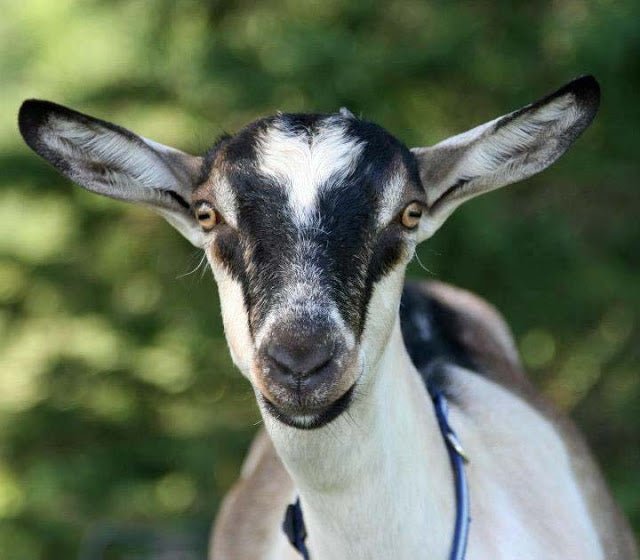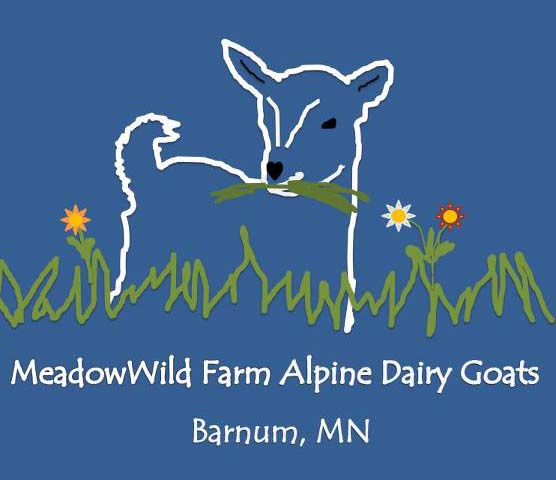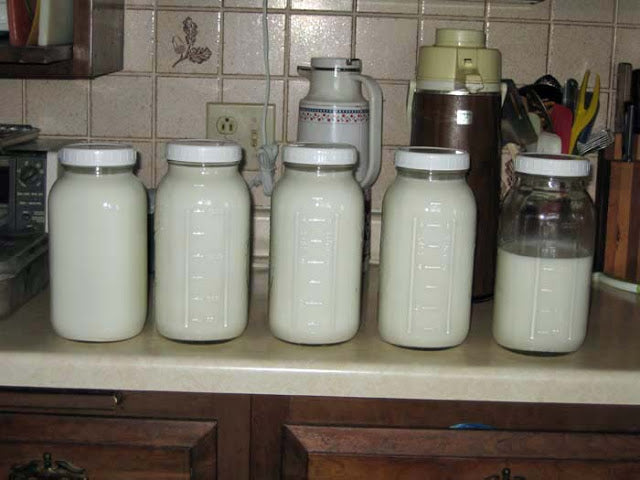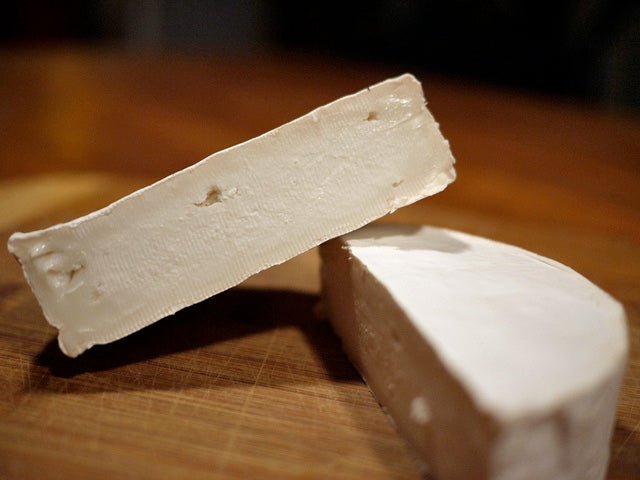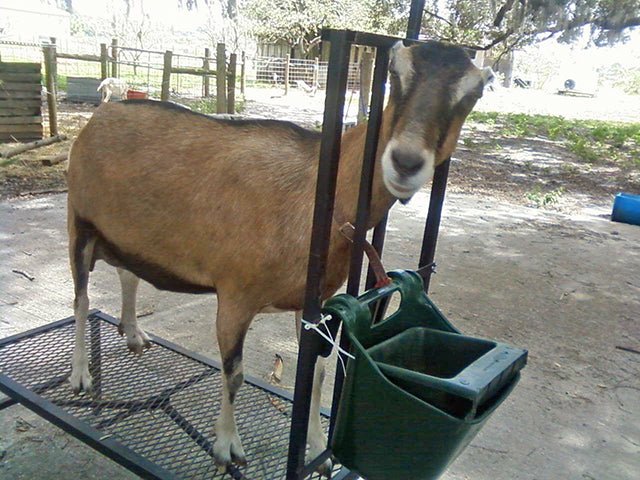 |
| Barb and Steve Adams of MeadowWild Farm |
Raising goats in their “retirement”
I began communicating via e-mail with Barb Adams when she wrote to us with a question about making Halloumi.*
She mentioned that she had attended Jim Wallace’s advanced workshop on Italian Cheeses in October, 2011.
She’s from Minnesota (Barnum) and I haven’t interviewed very many cheese makers from there, so, I asked her about doing an interview and she tried to decline:
very small time, not licensed, and only rank newbies in the cheese
world – so many more talented and dedicated folks out thereBut I’d encourage folks to keep trying! It’s daunting when there are so many,
many expert cheese makers – one wonders why even try to make homemade
cheeses? But I find real pleasure in bringing in the milk from our
generous Alpine Girls and finding ways to use it well.
So, I asked her what kinds of cheese she makes:
Cheeses made (all with our goats’ milk) and with varying degrees of success =
- chevre (lots and lots – using chevre culture from cheesemaking.com – YUM)
- yogurt cheese
- ricotta – using fresh milk and from cultured cheeses
- mozzarella – this is a challenge late in the season, to get it to stretch
- provolone/scamorza – smoked with applewood – this is a favorite
- canestrato
- cabra al vino
- haloumi
- feta
- cheese curds
- ricotta salata
- Juustoaleipa
- and a few of us “goat ladies” got our milks together (10 gallons) to make a big Gouda with a local expert – YUM!
I don’t know about you, but I find that list exceptional. It’s clear to
me that Barb is a master home cheese maker. So, I couldn’t let her off
the hook and she finally agreed to be “In the Spotlight” in our
September Moosletter.
The issue is time and she has
zero! First, she was moving three goats to their new home in Michigan.
Then she was attending a “Free Range Film Festival” sponsored by the Lake Superior Sustainable Farming Association. Then she was helping with the goat show at the Carlton County Fair. And she’s retired!
 |
| Barb’s Halloumi, made in July, 2012 from Jim Wallace’s recipe |
 |
| Canestrato |
 |
| Scamorza rounds brining before being smoked – not the traditional shape |
How did you get into this?
could adapt it. Went to the Minnesota State Fair looking at all the kinds of
animals one might have. Cows: to big horses: what use? Pigs: too
scary Chickens: too impertinent and disrespectful Fleece animals: too chancy in the economy.Goats! I love goat cheese – too expensive
to buy, so I’ll get goats. That’s the joke – thousands of dollars
later….. ha, ha I can have as much goat cheese as I want.
Goats are cute, intelligent, and useful. What breed? Alpines – very
challenging because they are so smart and spirited. And they come in so
many colors and make a lot of tasty milk.
So, I linked up with a large dairy in MN – Poplar Hill. We moved to the farm in early May of 2007 and we picked up our first two does on May 27, 2007. I retired in March of 2008, a couple days before we had our first kids. I’ve met the most wonderful people thru these animals!
When you say you “hooked up” with Poplar Hill, does that mean you’re selling them your milk?
and then 1.5 years later, we bought our buck, Majority (Mr. T) from them
also. They have helped me immeasurably in this effort! “Lifetime
service” says Sarah Maefsky Johnson when you buy a goat and she means
it. I still email her with questions/problems. She shares her
expertise so willingly.
What kind of cheese do you make most often?
melt the cheese. The first pics are of the cheese smoker I improvised
with some leftover dryer and furnace venting. I got the idea from
Storey’s Basic Country Skills.It’s a fire pit with about 7 feet
of venting laid under the sod leading to our grill. The venting is
attached to the grill and smoke passes from firepit thru venting to enter
grill at a fairly cool temp. I smoke the scamorza for about an hour
using wood from our old apple tree. Last pic is of the scamorza balls
in brine (for about 3.5 hours, then dried in the fridge for a day or so
before smoking). Works pretty good!
 |
| Finished smoker |
 |
| Trench dug and piping placed |
 |
| Pretty neat connection |
Barb and her husband, Steve, LOVE their goats. Steve’s hobby is photography so there are hundreds of pictures of their goats and their farm online at their website, their Facebook page and their blog – Out to Pasture.
I found a series of pictures on the blog of Barb helping one of her nannies with the delivery of her kid. I asked her if I could share them with you and she was happy to oblige. I find it to be a beautiful, intimate moment of farm life captured by Steve, so, if you have never been on the scene when a kid was born, check this out:
4/22/09Buckling Surprise
By Steve Adams at Out to Pasture
 Alba was due on Saturday, April 18, but gave no indication that she was imminent — or even pregnant —
Alba was due on Saturday, April 18, but gave no indication that she was imminent — or even pregnant — and then at 5:30 pm delivered a buckling, with the substantial help of the midwife, who tugged away heartily as Alba pushed.
and then at 5:30 pm delivered a buckling, with the substantial help of the midwife, who tugged away heartily as Alba pushed. The boy weighed in at 6 pounds, a bit under the ideal.
The boy weighed in at 6 pounds, a bit under the ideal. As the midwife waited for Alba’s placenta to emerge, she got another surprise around 6:15 pm:
As the midwife waited for Alba’s placenta to emerge, she got another surprise around 6:15 pm:
 the “Mommie Dearest” end.
the “Mommie Dearest” end. She occasionally grooms the bigger guy,
She occasionally grooms the bigger guy, but leaves the little one to fend for himself.
but leaves the little one to fend for himself. We’ve never seen Alba feed either boy on her own
We’ve never seen Alba feed either boy on her own
* Barb’s question to Jim Wallace (info@cheesemaking.com):
canestrato cheese. Used 4 gallons of milk – got 2 lb. 11 oz. basket
cheese and 15 oz. of ricotta.For some reason, the milk did not gel
with the 2 ml of rennet (may have not been acid enough – I used Bulgarian yogurt culture – not yogurt – used about 8 grams of Bulgarian
yogurt culture (the whole package was 33 grams, so I used approx. 1/4,
figuring yield of 24 oz. yogurt and I needed 6 oz. of yogurt (which I
didn’t have). So at end of 30 minutes, when the milk had not gelled, I
added another 3 ml of rennet. Waited another 30 minutes and voila –
nice curds.Did everything else according to Hoyle – well, according to Jim.Cheeses
are air drying today and will be brined tomorrow. The percent brine
is not specified…. is it always 12% for brining?
Jim’s answer:
In using the yogurt, it does not work well taking it out of the pack
since it takes so long to become active. In the instructions I point
out:”Y1 Yogurt made up (Thermo/ Bulgaricus @ 50:50 blend). Use
1% of milk volume. 7.5-8 oz. of active Y1 yogurt. This is the
thermophilic culture that will do most of the acid conversion at the
higher temperatures in this recipe.”This means the yogurt needs to be made up first before use so that you are adding a live working yogurt to the milk.2.
The other aspect is that the rennet cannot be added a second time if
there is not enough to begin with. You essentially defeat the enzyme
work in the first addition. It is best to use the target numbers and
increase the total coagulation time until you get a good set with your
initial rennet addition. Then you can adjust your next make to hit the
correct timing for rennet set.The increased
coagulation time may also have been due to using the yogurt as powder
(PS.. that was way too much). The acid was not developing and thus the
rennet took longer.For brining, when the % is not given, always assume a saturated brine.






























